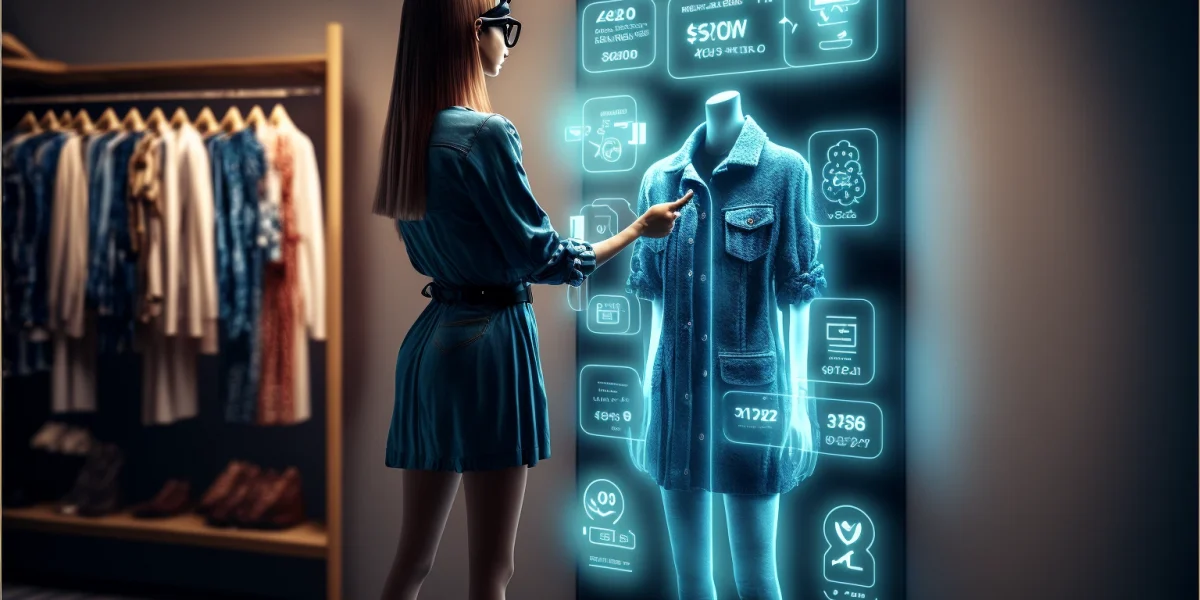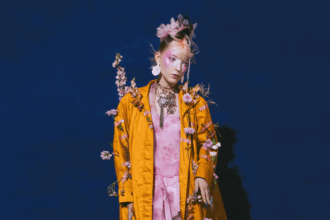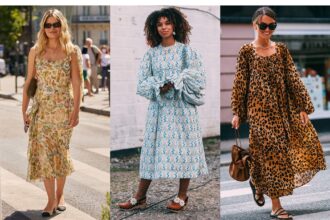Introduction to the Digital Couture Revolution
The fashion industry is undergoing a radical transformation. Gone are the days when trends were determined solely by designers and influencers. Welcome to the era of digital couture, where artificial intelligence (AI) is reshaping every aspect of how we create, shop, and experience fashion. From predicting what styles will dominate next season to allowing customers to virtually try on clothes from their living rooms, AI in the fashion industry has become an indispensable tool.
Imagine browsing your favorite online store and finding that perfect outfit—without ever stepping foot in a fitting room. Picture algorithms analyzing global trends at lightning speed to forecast what’s hot before it even hits the runway. This isn’t just wishful thinking; it’s happening right now as brands leverage technology to elevate their offerings.
Join us as we explore this captivating revolution that’s merging art with science. We’ll delve into how AI is not only enhancing creativity but also paving new paths for sustainability and inclusivity within the realm of fashion.
The Role of Artificial Intelligence in the Fashion Industry
Artificial intelligence is reshaping the fashion landscape in unprecedented ways. It serves as a powerful tool, streamlining various processes from design to marketing.
AI algorithms analyze vast amounts of consumer data, helping brands understand preferences and predict trends. This insight allows designers to create collections that resonate with shoppers before they even step into stores.
Moreover, machine learning enhances supply chain management. By predicting demand more accurately, brands can reduce waste and optimize inventory levels.
The integration of AI also extends to customer experience. Smart chatbots offer personalized recommendations while virtual assistants make navigating e-commerce platforms seamless.
Artificial intelligence is not just an added feature; it’s becoming fundamental in driving innovation within the industry. As technology evolves, its role will only deepen, pushing boundaries further than ever imagined.
AI-Powered Trend Forecasting: How It’s Changing the Game
AI-powered trend forecasting is revolutionizing how the fashion industry anticipates consumer behavior. Traditional methods relied heavily on intuition and historical data, often leading to missed opportunities.
Now, artificial intelligence analyzes vast amounts of data from social media, online searches, and even weather patterns to predict what styles will resonate with shoppers. This real-time insight allows brands to stay ahead of the curve.
Moreover, AI can identify emerging trends before they hit mainstream consciousness. By leveraging machine learning algorithms, designers gain a deeper understanding of customer preferences across different demographics.
The result? Faster decision-making processes and more tailored collections that appeal directly to consumers’ desires. As competition intensifies in the fashion landscape, embracing AI-driven trend forecasting becomes essential for staying relevant and profitable. It’s not just about following trends anymore; it’s about setting them with precision.
Virtual Try-Ons: The Future of Online Shopping
Virtual try-on technology is transforming the landscape of online shopping. Gone are the days when customers relied solely on size charts and static images. Today, shoppers can see how clothes fit in real-time.
Using augmented reality, virtual fitting rooms enable users to visualize garments on their own bodies. This creates a personalized experience that enhances confidence in purchasing decisions.
Brands are integrating AI-driven solutions to analyze body shape and skin tone for perfect matches. The result? A seamless blend of fashion and technology that minimizes returns and boosts customer satisfaction.
As consumers crave convenience, this innovation reshapes traditional retail dynamics. Shopping from home becomes less daunting with tools that bring clothing to life.
This shift not only caters to individual preferences but also supports sustainability efforts by reducing waste associated with returns. Virtual try-ons represent more than just a trend; they signify a new era where digital meets couture effortlessly.
Sustainable Fashion and AI: A Perfect Match
Sustainable fashion is gaining momentum, and AI is at the forefront of this transformation. By leveraging artificial intelligence, brands can make eco-conscious decisions that align with modern consumer values.
AI analyzes vast amounts of data to identify sustainable materials and production methods. This technology helps designers create garments that minimize waste while maximizing style.
Predictive analytics powered by AI allows companies to forecast demand accurately. This ensures they produce only what’s needed, reducing overproduction—a significant issue in traditional fashion.
Moreover, machine learning algorithms can enhance recycling processes by identifying fabric types and their viability for reuse.
With smarter inventory management, businesses cut down on excess stock and resources spent on unsold items. The result? A more responsible approach to fashion without sacrificing creativity or innovation.
The Impact on Traditional Fashion Designers
Traditional fashion designers are facing a seismic shift due to AI in the fashion industry. The introduction of advanced technology is reshaping how they create and market their collections.
Many designers now leverage artificial intelligence fashion tools for insights into consumer preferences. This data-driven approach allows them to tailor designs that resonate with modern buyers, greatly enhancing relevance.
However, some traditionalists feel threatened by this rapid transformation. They worry about losing the artistry and intuition that has defined their craft for centuries. Yet, many are discovering ways to integrate AI without sacrificing originality.
Virtual try-on technology is also changing the landscape for these creatives. Designers can showcase their work online more effectively, reaching wider audiences while reducing waste from unsold inventory.
Embracing these innovations opens new avenues for collaboration and inspiration within the design community. Those who adapt may find themselves at the forefront of a dynamic future in fashion.
Challenges and Limitations of AI in the Fashion Industry
Despite the myriad benefits of AI in the fashion industry, challenges abound. Data privacy concerns top the list. With vast amounts of consumer data required for effective AI systems, brands must navigate complex regulations to protect user information.
Another hurdle is creativity. While algorithms excel at analyzing trends, they often lack the human touch that imbues fashion with emotion and artistry. This reliance on data can lead to homogenized designs that don’t resonate deeply with consumers.
Training AI models also demands significant resources and expertise. Smaller brands may struggle to keep pace due to financial constraints or a lack of technical know-how.
Furthermore, integrating AI into existing workflows poses logistical challenges. Fashion houses need robust infrastructure and collaboration between tech teams and designers for seamless implementation.
There’s resistance within traditional sectors of the industry. Some artisans fear losing jobs or creative control as machines take over certain processes. Balancing innovation with craftsmanship remains an ongoing debate.
Embracing the Change: Brands Leading the Digital Couture Revolution
As the digital couture revolution unfolds, numerous brands are stepping up to embrace the transformative power of AI in fashion. Innovators like Stitch Fix utilize algorithms to curate personalized clothing selections for their customers, blending human creativity with machine intelligence. Similarly, companies such as ASOS and Zara are incorporating virtual try-on technology into their websites, allowing shoppers to visualize how items will look without ever leaving home.
Other pioneers include Nike and Adidas, who leverage AI-driven fashion design tools not just for creating new styles but also for enhancing customer interaction. These industry leaders recognize that adopting smart fashion retail practices is essential in this fast-evolving landscape.
Moreover, emerging labels focusing on sustainability harness artificial intelligence to streamline production processes and minimize waste. By analyzing data patterns and consumer preferences more efficiently than ever before, these brands can deliver eco-friendly products while remaining fashionable.
The shift towards a digitally dominated future isn’t merely about technology; it’s about reimagining the entire approach to fashion—making it more inclusive, sustainable, and responsive to individual needs. As these trailblazing companies lead the charge, they set an inspiring precedent for others in the industry to follow suit. The marriage of art and science is not just inevitable; it’s already happening right before our eyes.










